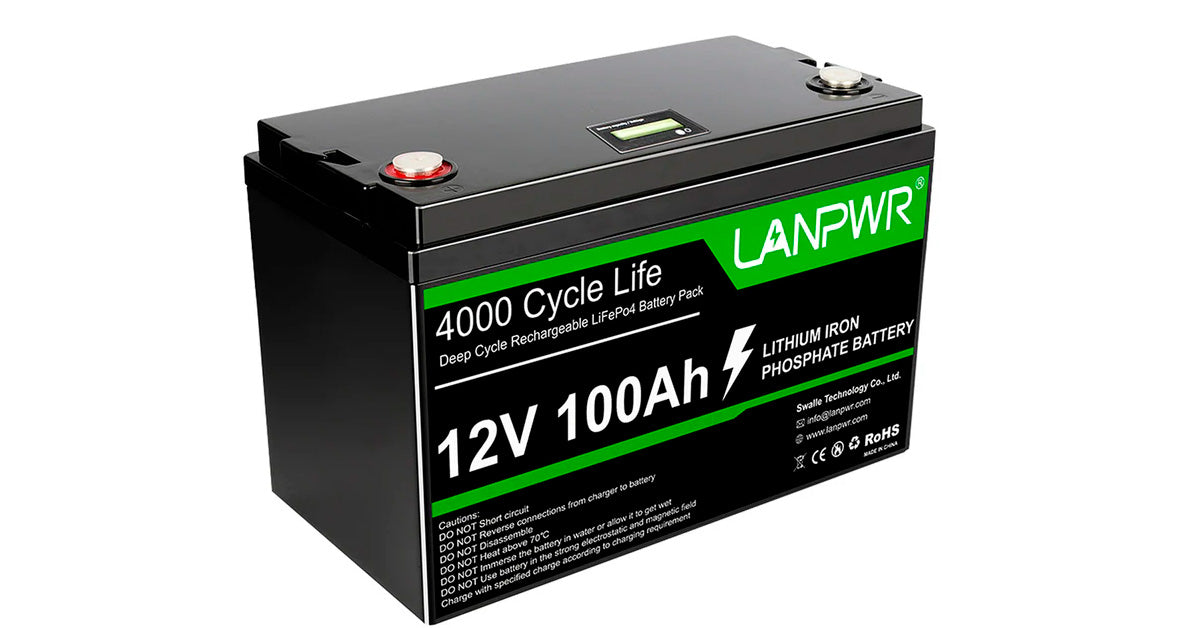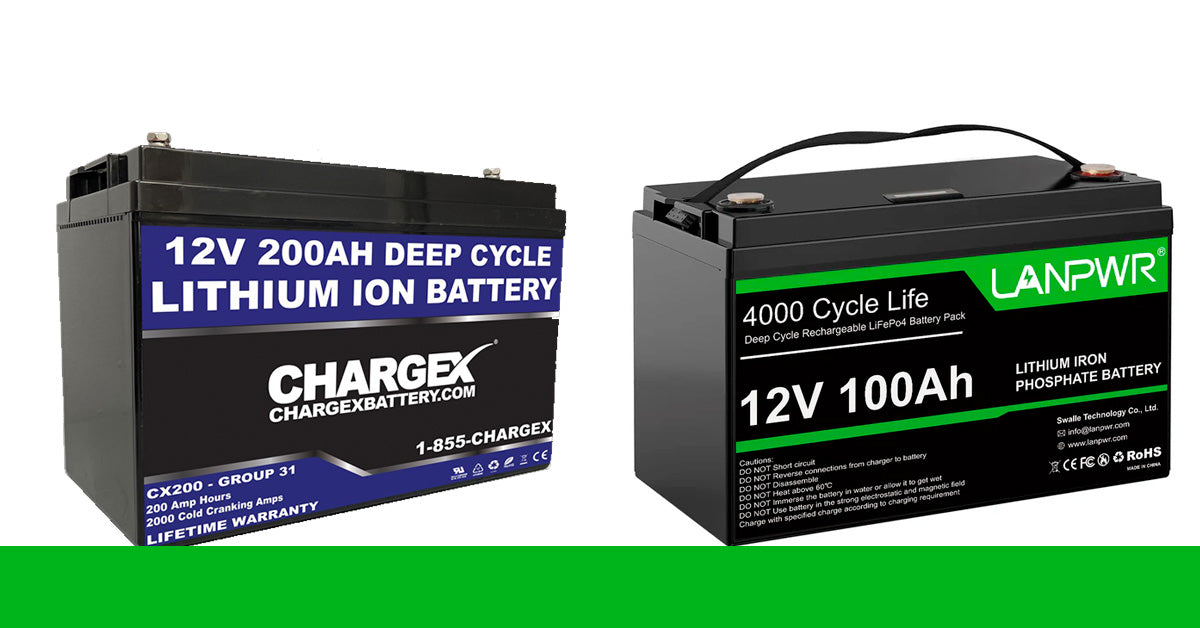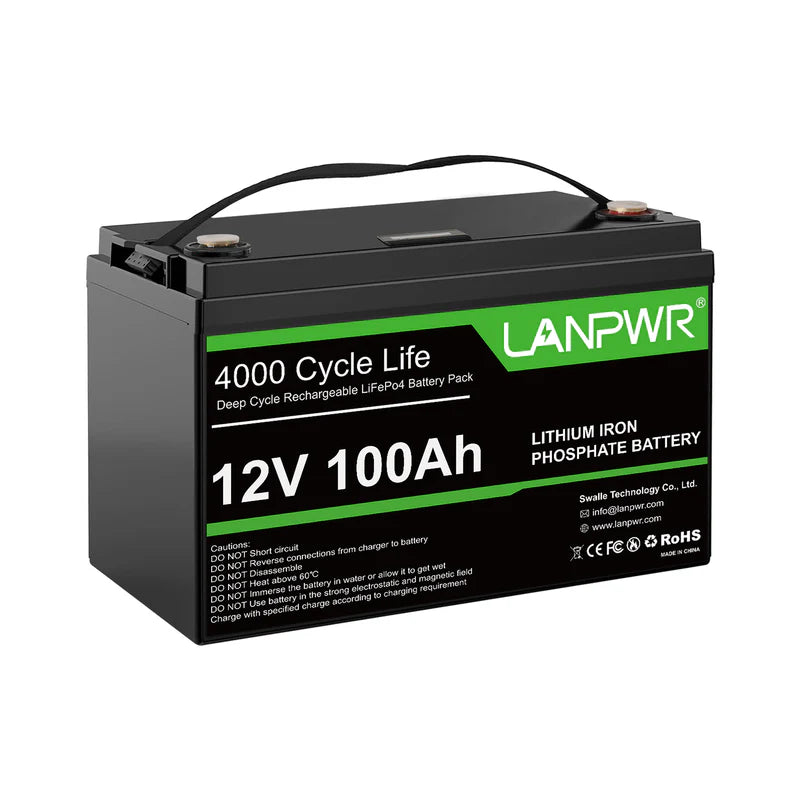LiFePO4 Batteries outshone Lead-Acid counterparts when it comes to lifespan, charging speed, safety, weight considerations and energy storage capability. They provided superior energy solutions.
High Energy Density
LiFePO4 battery energy density is higher than lead acid batteries but lower than lithium-ion batteries, yet LiFePO4 still boasts an extremely high energy density, which enables these small batteries to store significant amounts of power despite being small in size.
LiFePO4 batteries offer energy densities of 100 to 120Wh/kg compared with lead acid batteries with 30–40 Wh/kg and lithium ion's batteries-200 Wh/kg; its energy density remains relatively high when considered alongside its other advantages.
LiFePO4 batteries make an excellent choice for electric car applications due to their relatively high energy density and ability to provide ample power without adding unnecessary weight. LiFePO4's energy density surpasses comparable lead acid batteries by about 20%!
Long Lifespan
Lithium Iron Phosphate (LiFePO4) Batteries offer a long lifespan when compared with batteries from other chemistries, lasting 3,000 recharge cycles while still holding onto 80% capacity; significantly longer than typical lead acid batteries that only endure 200 or 300 charges before reaching capacity again.
LiFePO4 batteries maintain their capacity over their lifespan; even after thousands or hundreds of cycles, there is little capacity loss, and proper cycling can extend LiFePO4 life by 5–10 years with proper care. Due to this stable chemistry being resistant to degradation, LiFePO4 batteries last many years for applications like solar energy storage systems, electric vehicles, or off-grid system power.
LiFePO4 batteries offer exceptional longevity and reliability when cycled frequently; with frequent cycling cycles lasting much longer than many other batteries on the market.

Alt: Description of battery built-in
Safe Chemistry
LiFePO4 batteries feature an extremely stable cathode composed of tightly bound phosphate groups to iron. Their design offers resistance against damage even during overcharging; other lithium-ion chemical compounds may lead to a dangerous thermal runaway that releases harmful gas emissions; and strong phosphate bonding prevents oxygen detaching from the battery, which could otherwise result in fires or explosions.
LiFePO4 batteries offer protection from accidental overcharging or discharging without resorting to complex battery management systems; their inherent safety enables large battery structures without monitoring individual cells individually - an advantage over competing energy storage materials like steel. LiFePO4's simplicity and robustness also make it an attractive energy storage choice.
Fast Charging Capability

Lithium iron phosphate batteries (LiFePO4) are well-known for their fast charging capability—up to 1C! One 100Ah LiFePO4 battery may safely receive a charge of up to 100A.
Lead acid batteries must be charged at much lower currents; typically only up to 0.2C can be applied. By trying to charge with higher currents than this limit is reached you risk damaging it irreparably.
Fast charging of LiFePO4 batteries is made possible thanks to their crystallized cathode material which enables lithium ions to move efficiently in and out without experiencing structural degradation over time.
With the right charger and cell design, a LiFePO4 cell can be charged within 30-60 minutes using rapid discharge/charge cycles - ideal for applications such as electric vehicles, golf carts, or forklifts that require quick recharge cycles.
LiFePO4 batteries offer many advantages over lithium-ion and lead acid batteries when it comes to fast charging capabilities, making reusing and charging easier and faster than before.
Low Environmental Impact
LiFePO4 batteries are more eco-friendly than lead acid alternatives because they do not contain heavy metals such as lead and cadmium that pollute the environment, unlike their lead acid counterparts. Both materials used are nonhazardous with graphite being the material for an anode and cathode electrode respectively.
LiFePO4 batteries can be fully recycled at the end of their life cycle, with metals and chemicals easily recovered for reuse or recovery, making these much more environmentally friendly than lead acid batteries, which may prove more challenging to dispose of properly. Furthermore, their casings and inner chambers have been specially designed to enable their recycling.
LiFePO4 batteries offer significant improvements in sustainability and environmental impact when compared with traditional lead-acid batteries, thanks to their materials and recycling capabilities. No risk exists of contamination with its parts being reused instead of simply being thrown out - something important for eco-conscious applications and consumers.
Wide Operating Temperatures
LiFePO4 batteries' ability to work effectively across a broad temperature range is one of their key advantages over other lithium-ion batteries, giving LiFePO4 the edge when operating under extreme temperatures (-20degC to 60degC or 4F up to 140F) for easier usage in extreme heat or cold conditions. They may even be useful when power needs exceed their capabilities in extreme situations like earthquakes.
LiFePO4 lithium-ion battery types are less prone to performance degradation in response to temperature extremes than other forms. LiCoO2 batteries and LiPos, for instance, may experience reduced power or capacity at lower temperatures; but LiFePO4 maintains optimal charge/discharge performances regardless of temperature extremes.
LiFePO4 batteries provide thermal stability thanks to their thermally stable cathodes; in comparison with other lithium-ion batteries at high temperatures.
LiFePO4 batteries have the unique capability of operating across an extremely broad temperature spectrum, performing reliably under severe climate conditions ranging from freezing winter conditions to scorching desert heat waves.
Low Self-Discharge
LiFePO4 batteries feature extremely low rates of self-discharge, approximately 2-2% per month. As such, these batteries maintain their charge extremely effectively even if not frequently in use or storage.
LiFePO4 battery losses are significantly smaller than lead-acid ones; lead-acid can lose as much as five percent per day! Furthermore, LiFePO4 batteries offer long shelf lives with reduced maintenance requirements to avoid deep discharge.
LiFePO4 batteries retain most of their charge even after several weeks of inactivity, making them well-suited to applications with long periods of inactivity or irregular use patterns due to their low self-discharge rates. LiFePO4s may even be stored over winter to have plenty of capacity ready when spring comes around!
LiFePO4 batteries were once much more costly than lead acid batteries; however, thanks to increased production efforts aimed at meeting consumer demand they have seen their price decrease dramatically over time.
LiFePO4 batteries have become competitive with lead acid batteries in certain applications; however, their prices continue to decrease each year.
LiFePO4 batteries of comparable capacity (10-20Ah) cost only 20-30% more than equivalent lead acid batteries; in larger batteries (100Ah+), however, LiFePO4 costs 50-100% more.
LiFePO4 batteries prove cost-effective over the long term due to lower maintenance expenses and longer lifespan. Their initial premium can quickly become worth its weight in savings over time.
LiFePO4 prices should decrease as manufacturing capacities increase and new chemicals come onto the market, potentially reaching parity in price with lead acid across applications within five to ten years.
Performance Summary
LiFePO4 batteries offer excellent performance across an array of applications due to their exceptional endurance. Some key metrics of LiFePO4 performance:
Voltage: LiFePO4 cells typically provide an output voltage range between 2.32V and 3.2V, making their batteries simpler compared to lead acid cells at 2V and Li-ion's 3.6V output respectively. LiFePO4 offers greater versatility compared to lead acid batteries when designing battery packs for various use cases than would lead acid packs alone.
Lead acid batteries typically feature capacities from 1Ah to 100Ah and typically possess energy densities between 90 to 120 Wh/kg, making lead acid far more expensive than lithium-ion options but boasting higher energy density ratings.
LiFePO4 boasts an energy density between 70-120Wh/kg versus 100-265Wh/kg for lithium-ion and 30-50Wh/kg for lead acid batteries, making LiFePO4 significantly larger due to its lower energy density.
Ideal Applications
High Power Density: With power density levels up to 2000W/kg, lithium-ion cells provide fast charging rates and discharge rates much greater than lead acid batteries.
LiFePO4 Batteries have an expected cycle life between 2,000-5,000 cycles. Their long lifespan makes these batteries cost-effective over their lifespan.
LiFePO4 is an extremely safe material. It boasts outstanding chemical and thermal stability. Furthermore, cathode materials have proven highly stable reducing risks such as fires or explosions which is an advantage over lithium-ion. This represents one advantage over competing alternatives like Li-ion.
LiFePO4 batteries combine high power density, fast charging speed, long cycle life span, and safety characteristics with lower energy density than lithium-ion. However, LiFePO4 makes for greater application compatibility than its lithium counterpart in certain situations.
LiFePO4 batteries are ideal for applications requiring long-lasting, safe batteries that deliver exceptional performance, such as solar or energy storage solutions. LiFePO4's many applications make this material indispensable.
Electric Vehicles
LiFePO4 is the battery chemistry of choice for most electric vehicles. Compared to lead-acid batteries, LiFePO4 offers much higher energy density, allowing electric vehicles to drive farther on a single charge. The long lifespan (up to 5,000 cycles) enables the batteries to last the lifetime of the vehicle under normal usage. LiFePO4 also offers excellent safety due to its stability under abuse conditions. This chemistry is ideal for the demanding performance requirements of electric vehicles.
Solar/Off-Grid Storage
For solar energy storage and off-grid applications, LiFePO4 provides reliable performance and long life. The high cycle life handles frequent charge/discharge cycles from solar panels or wind turbines. LiFePO4 retains charge well, so stored energy remains available even after extended periods without generation. The wide operating temperature range allows these systems to work in extreme environments. LiFePO4 is a popular and proven battery chemistry for renewable energy storage applications.
Uninterruptible Power Supplies (UPS)
LiFePO4 batteries deliver the combination of high reliability, long life, and safety needed in uninterruptible power supplies (UPS). UPS systems provide backup power to critical server racks, telecom switches, and other infrastructure. LiFePO4 tolerates repeated 100% depth of discharge cycles without damage, ideal for frequent power outages. The safe chemistry reduces risk compared to lead-acid UPS batteries. LiFePO4's performance characteristics make it a top choice for UPS applications needing long runtimes and frequent cycling.
We'd love to hear about your experiences or any questions you might have regarding RV battery safety. Also, if you're looking for a top-of-the-line lithium-ion battery, consider the LANPWR 12V 100Ah LiFePO4 Battery. It's considered one of the best in the world, offering over 4000 deep cycles and a built-in 100A BMS for optimal performance in your RV.














Leave a comment
This site is protected by hCaptcha and the hCaptcha Privacy Policy and Terms of Service apply.